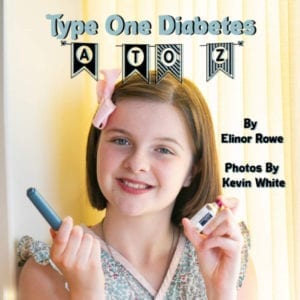
24 Dec Springfield girl with Type 1 diabetes pens book for newly diagnosed kids
From Jackie Rehwald at Springfield News-Leader
Photos by Nathan Papes/Springfield News-Leader
In 2016, Ellie Rowe was diagnosed with Type 1 diabetes, a chronic condition in which the pancreas produces little or no insulin. She was 8 and in third grade.
Now a sixth-grader at Springfield Lutheran School, Ellie recalled some of the signs and symptoms she and her parents first noticed.
“We had just got back from Disney, and Dad kept looking at the photos and kept saying, ‘Her dress looks a lot bigger than last year. She looks really thin,'” Ellie said. “I was really tired. I was drinking a lot of water.”
Sensing something was wrong, mom Megan Rowe brought Ellie to the pediatrician. The doctor ordered a urine test, which revealed the disease.
The Rowes were sent to an outpatient lab for further testing and then figured they were done for the day.
“We knew that the pediatrician would be getting back in touch with us as soon as she saw those labs,” Megan Rowe said. “She called immediately on our cell and said, ‘I need you to come back to the hospital. (Ellie) was in DKA (diabetic ketoacidosis).'”
Soon Ellie and her mom were in an ambulance, headed to Children’s Mercy in Kansas City (dad following in the car) and thus began the family’s experiences with Type-1 diabetes.

Sixth-grader Ellie Rowe, who has diabetes, shows a draft of her book that she originally wrote for a class project as a guide to managing the disease for kids. Rowe is now working with a publisher to bring the book to print.
Ellie first wrote about her disease for a class project in fourth grade. The book, titled “ABC’s of Type One Diabetes,” went on to win first place and third place awards in her school’s Language Arts Department competition.
The young author is now working with an editor and publishing company. The final edition of her book will be released in 2020. The Rowes hope the book helps other kids recently diagnosed with the auto-immune disease.
Learning to manage the disease
Looking back on that ambulance ride to Kansas City, Ellie said she felt “really scared” and wondered how long all this was going to take.
It was close to Thanksgiving and she remembers how the paramedics put Christmas music on the radio.
“I fell asleep. I remember in my brain, my dream — Silver Bells,” she said, closing her eyes. “I was running around silver bells.”
Megan Rowe said she was grateful they allowed her to ride in the front seat.
“I could at least turn around and see her,” Megan Rowe said. “It was the longest ride.”

Megan Rowe talks about her daughter’s diabetes diagnosis.
At the hospital, doctors got Ellie’s blood sugar under control and the family immediately began their diabetes education.
“It was a lot to learn,” Megan Rowe said. “It was great being at a children’s hospital because they had geared all the education toward pediatric patients.”
The Rowes learned how to dose insulin, calculate carbs, test her blood sugar and everything else that comes with managing Type-1 diabetes.
“I was in third grade and we weren’t learning any fractions or how to divide,” Ellie said. “I had to learn this ahead of my class.”
“You don’t want a math mistake to become a medical one,” Megan Rowe added.
And because Ellie might not eat an adult-size portion of food, the family has nutrition apps like CalorieKing and MyFitnessPal on their cellphones and devices.
“My hat’s really off to people who did this before there were so many advances,” Megan Rowe said, laughing. “I can’t imagine doing this 15 years ago before you carried a smart phone (and when) restaurants started providing that information.”
When her daughter was first diagnosed, Megan Rowe went to a dollar store and bought a bunch of measuring cups to help her get better at measuring portions.

Sixth-grader Ellie Rowe, who has diabetes, show where her insulin pump connects to her arm.
“I had to train my eye for when we were eating out at what a half a cup of potatoes looked like,” Megan Rowe said. “I wasn’t good at estimating and I need to be much more precise to help Ellie calculate carbs.”
These are the sort of tips the Rowes say they often share with other families of newly diagnosed kids. Not medical advice, Megan Rowe said, but sharing tricks they’ve discovered to help Ellie manage her disease.
“Sometimes it just helps to meet somebody who is already a little further into it, to know that how it looks in the beginning is not how it looks forever,” Megan Rowe said. “I am not an expert on diabetes. I feel like Ellie is an expert on her care and I help her with that.”
When she was in fourth grade, Ellie was fitted with an insulin pump, a small computerized device that delivers insulin through a thin tube that goes under her skin. It is connected to her CGM (continuous glucose monitor).
But even with all this technology, Ellie knows to listen to her body first and foremost. If she feels shaky but her pump doesn’t show that she’s low, she knows to go ahead and perform an actual blood glucose test and eat a few carbs rather than just accepting what the pump says.
“It was good that we had a year before the pump because we learned the fundamentals,” Megan Rowe said.
They are also thankful for the support Ellie gets at school — from her teachers, the principal and her friends.
“We have been met with phenomenal support,” Megan Rowe said.



